Road trips are great for spontaneous holidays, but it’s important to budget for fuel costs. Here are the best fuel saving tips for road trips and long drives.
Is living the Van Life all it's cracked up to be?
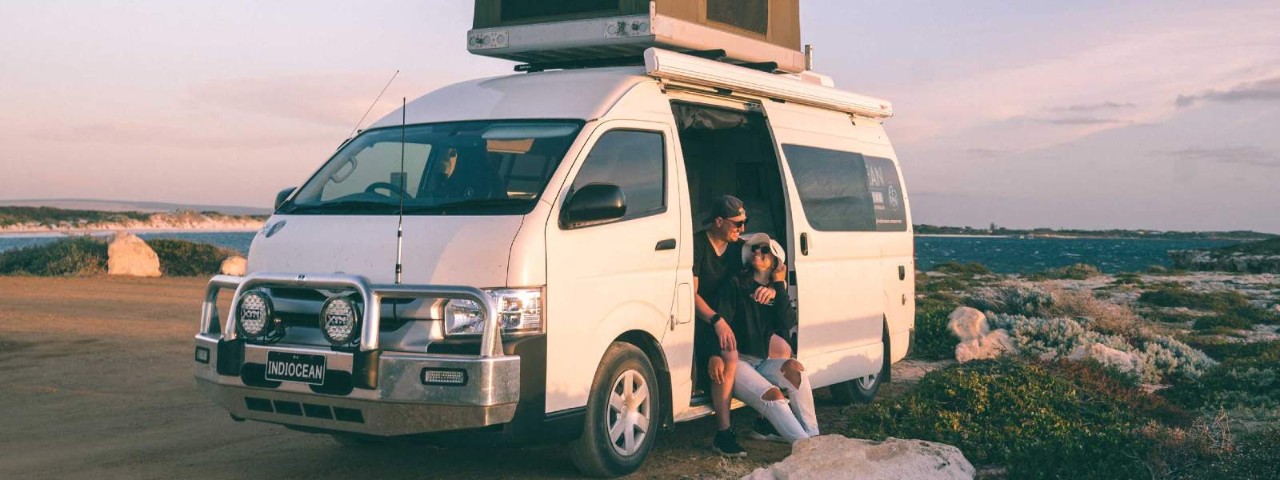
Many people fantasise about swapping suburbia for the open road, but is van life as glamorous as it looks on Instagram? We find out the pros and cons from those who have tried it.
If you’re dreaming of adventure and a carefree life after two years of being cooped up at home, you’re not alone. Sales of caravans, mobile homes and vans are booming, and a Caravan Industry Association of Australia survey found that 71 per cent of Aussies were planning to go on a camping or caravanning adventure this year, while 78 per cent of those surveyed preferred the idea of travelling around Australia than overseas.
Among those hitting the road is a new generation of Australians choosing to travel around in a van, with a Nomads Around Australia survey showing the majority of “van lifers” are aged between 25 and 34.
Once the preserve of grey nomads and hippies, van life has taken on an air of glamour, largely due to social media. If you search #vanlife on Instagram, you’ll find more than 12.8 million posts of smiling couples and happy families lounging around in campervans, custom-built 4WDs and Kombi vans parked next to postcard-perfect destinations.
In #vanlife, it never rains, vehicles don’t break down, and no one argues despite couples or families almost living on top of each other. But what’s the reality behind #vanlife? And would this lifestyle work for you?
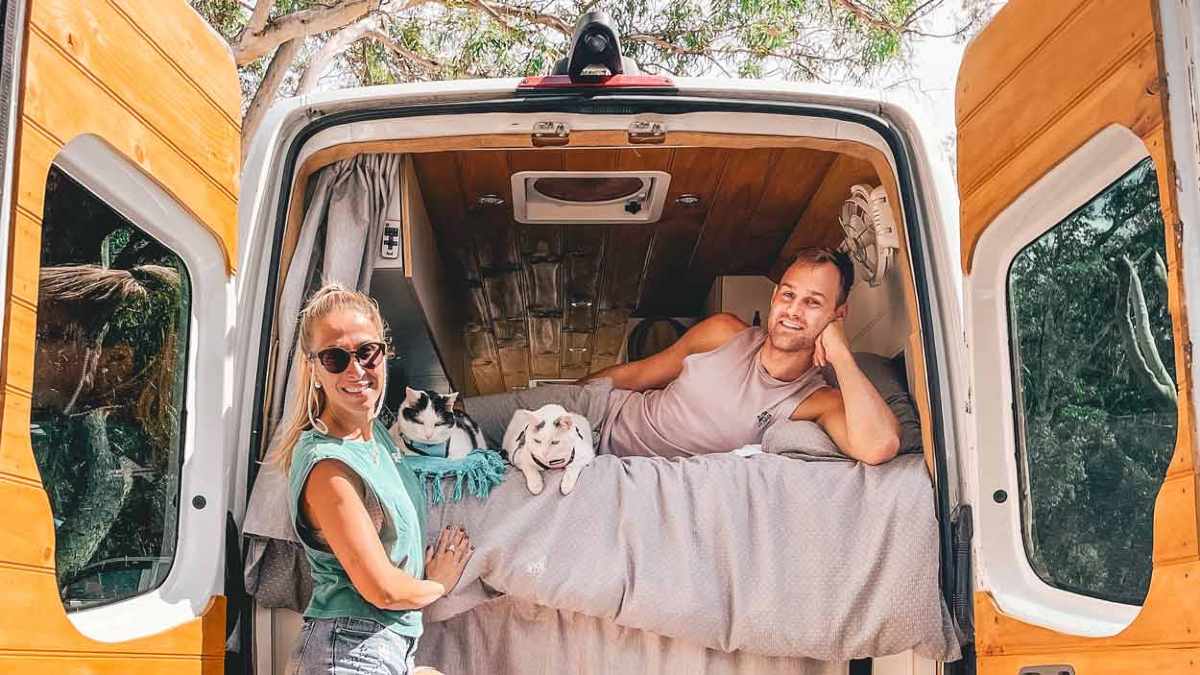
Dani and Wade are planning to travel around Australia with their two cats for 18 months. Image: Supplied.
What is van life?
Van life is a philosophy as much as a way of life. It’s about having freedom and flexibility, living simply and economically, and not being tied down by mortgages and materialism.
Wade Badby, who is travelling around Australia with his girlfriend Dani, says the housing affordability crisis has made van life attractive to many young people and families.
“We started off hiring camper vans for weeks at a time and loved it,” Badby says. “So, when COVID hit, and I wasn’t happy with my office job, I said to Dani, ‘Let’s try and do this’.”
The couple and their two cats started travelling full-time in March, and they plan to do the big lap of Australia over the next 18 months. They have a guide on how to get started if you’re interested in van life and you can follow their travels via #travelwithwadeanddani
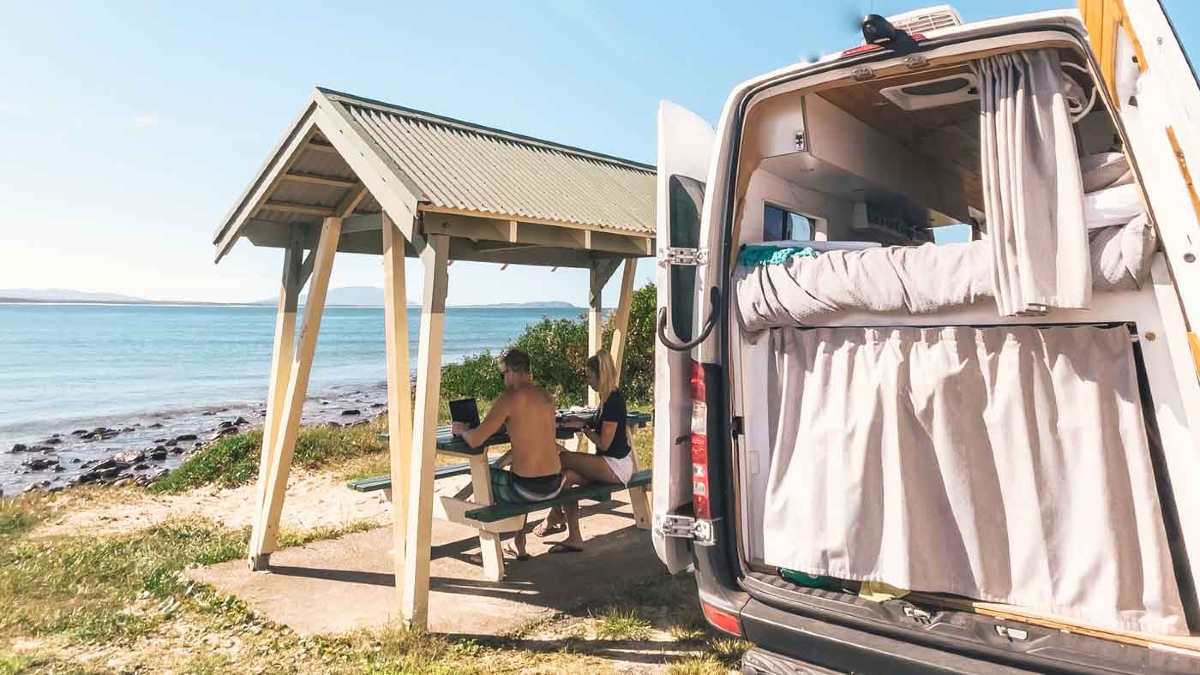
The highlight of van life is waking up every day to different scenery, such as Crowdy Bay in New South Wales. Image: Wade Badby.
What kind of van do you need?
The Van and Bus Life Survey by Nomads Around Australia found 47 per cent of those surveyed drive a van, while 20 per cent drive a 4WD and 13 per cent a bus.
The most popular brand of van-life vehicles are Toyota, Mitsubishi, and VW, while many van-life blogs specifically recommend Toyata Hiace, Ford Transit, Fiat Ducato and Mercedes Sprinter.
Badby bought a 2017 Mercedes Sprinter LWB in November 2020 for $38,000 and spent $25,525, and seven months, converting it into a mobile home with solar panels, insulation, plumbing, electricals and cabinetry.
It’s also not uncommon for van lifers to upgrade their vehicle along the way. Mandy Farabegoli and her husband, who travelled around Australia for two years with their three young children, upgraded to a Nissan Patrol.
“Our first car didn’t give us the ability to go off road as much as we wanted to, so we bought a car that could.” she says. “We also bought an old second-hand caravan for $6000, and we thought we would also upgrade this on our trip, but this old van did not let us down in the two years of van life.
“Buying this cheaper vehicle gave us more money to do some of the bigger ticket items, such as fly over Kakadu.”
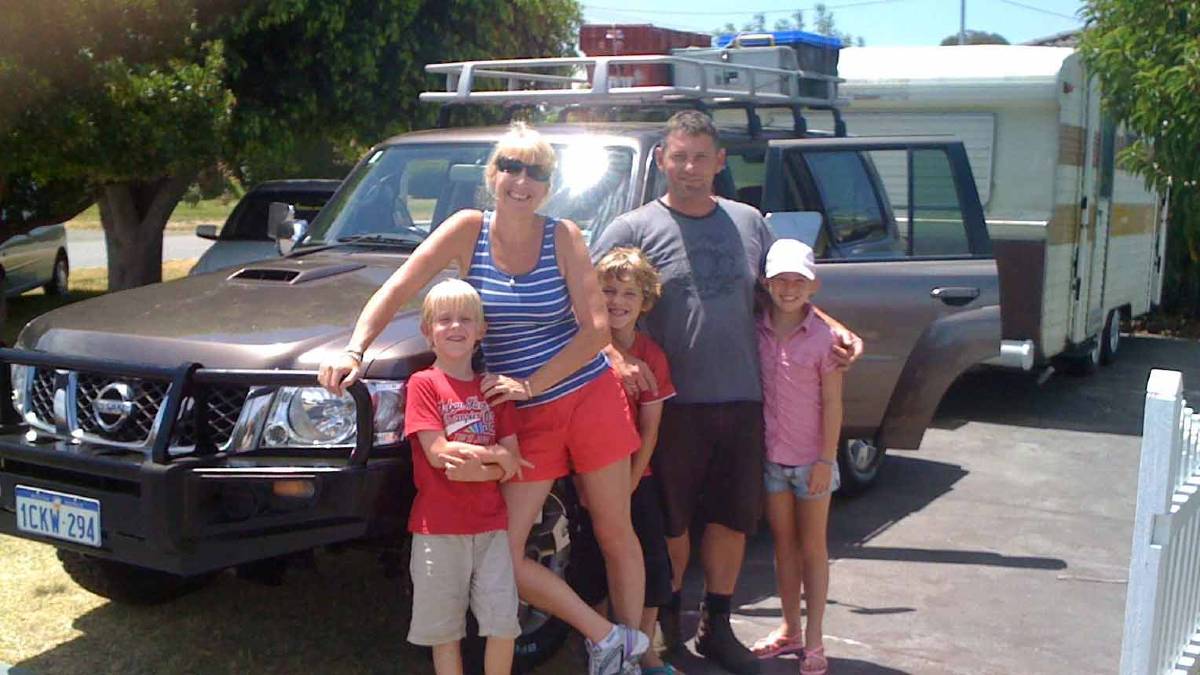
Van life is nothing new. After travelling around Australia for two years, Mandy Farabegoli shares her tips with other families via her website. Image: Supplied.
Is van life as glamorous as it looks on Instagram?
“Yes and no,” Farabegoli says. “I think everyone realises that washing and shopping still need to take place daily but there's no joy in posting or seeing that on Instagram. People generally want to see places and get ideas for their own trip.”
“You have good and bad days, as you do at home. The kids might be naughty, and you might argue, but the views will be better, and every day can literally be a new start on a new spot.”
Badby says creating a social-media following can lead to sponsorship. “You can potentially make money from Instagram, which can help you travel longer and not dip into your savings, so you want your posts to look good,” he says.
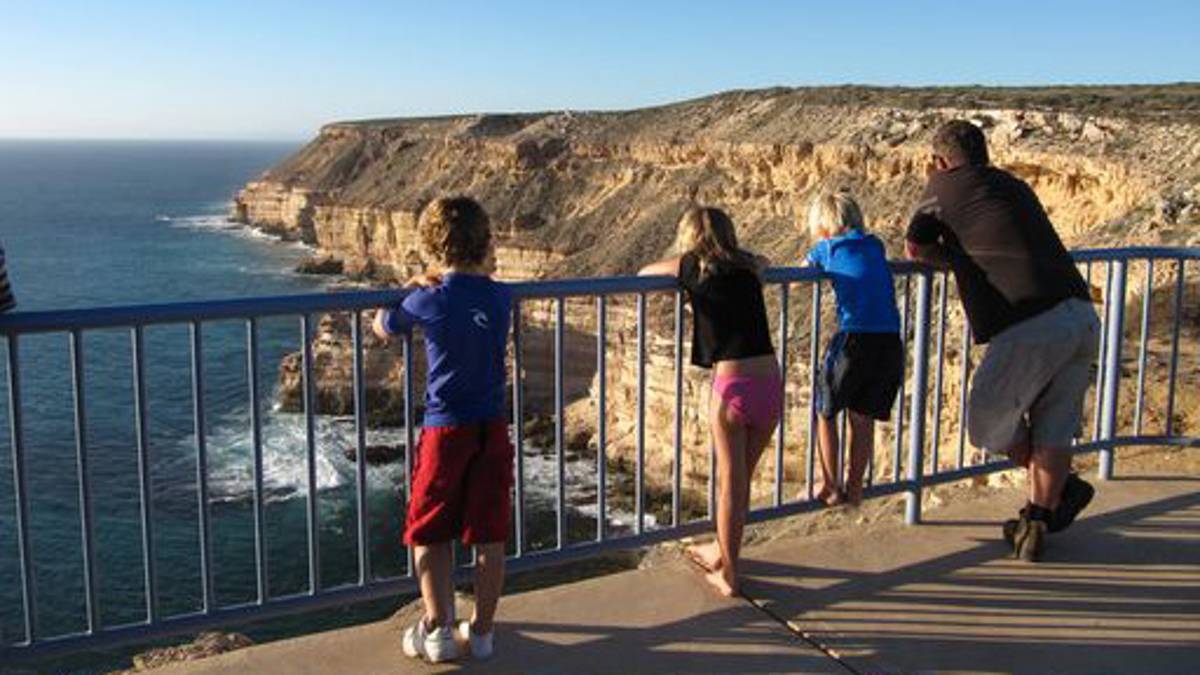
Schooling can be a challenge on the road, but children can learn about places such as Kalbarri National Park in Western Australia. Image: Mandy Farabegoli.
What are the greatest challenges of van life?
Adjusting to the lack of routine and the confinement of the van are the first big hurdles.
Then there’s poor internet reception, running of fresh water, mosquitos and midges, and the need to regularly empty the toilet, plus the potential for things to go wrong on the road.
“Life slows down and sometimes you’re not sure where you’re going to sleep for the night,” Badby says. “We try to plan, but you need to be flexible. We’ve had to change our plans a few times to get around bad weather.”
He uses the app Wikicamps Australia, a crowd-sourced database, to find campgrounds, caravan parks, water points, public conveniences and information centres.
“Living in a confined space can also put a strain on a relationship. It can be tough if you’re not strong together,” Badby says.
From a family perspective, Farabegoli says schooling can be a challenge, but not as much as you’d think. “You just need to be organised and keep it simple,” she says. She has education resources on her website Travelling Australia With Kids to assist other families.
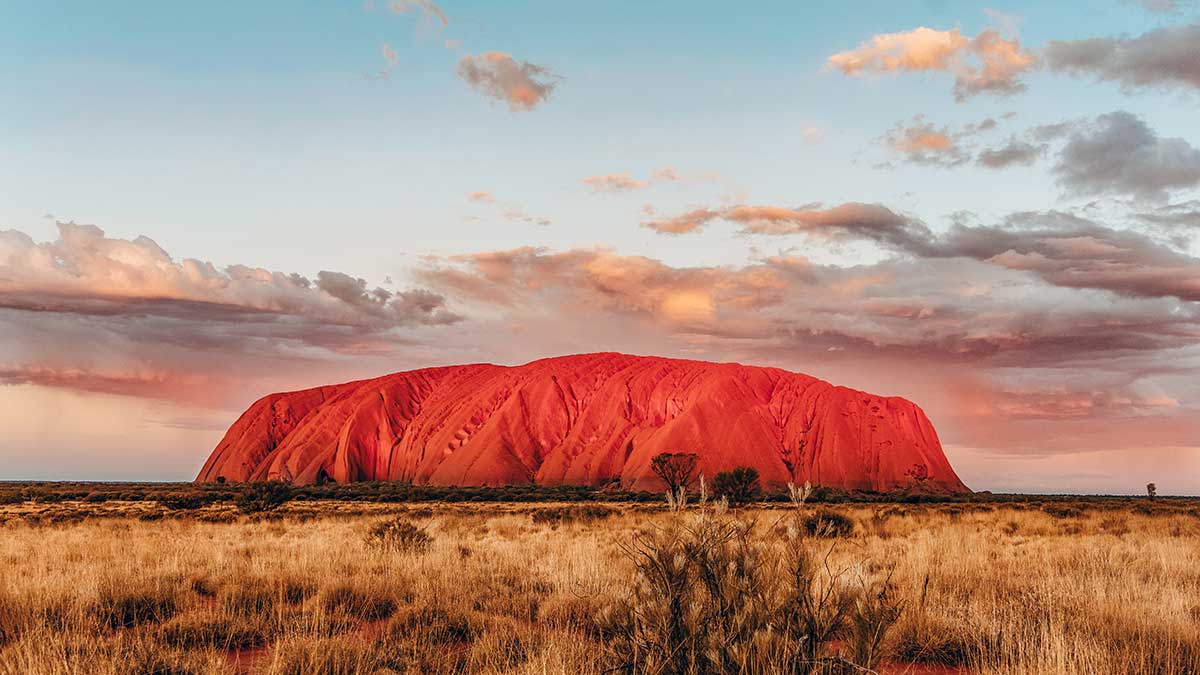
Uluru is one of the top destinations for families travelling around Australia. Image: Supplied.
Best van-life destinations
Australia is blessed with natural wonders, beautiful beaches and World Heritage-listed areas, giving van lifers endless opportunities to wake up to stunning scenery and unique experiences every day.
Badby says the highlights of their trip so far have included the sunsets and sunrises in Queensland’s outback and the rock pools in Blackdown Tableland National Park. “We also enjoy things that aren’t super touristy,” he says. “We went to an abandoned uranium mine the other day, that was cool.”
Travelling Australia with Kids has a list of must-see destinations, as voted by families on the road. The top three are Cape York in Queensland, Uluru in Northern Territory and Exmouth and Ningaloo Reef in Western Australia.

It can cost more than $25,000 to convert a van into a mobile home, but comfort and safety on the road are paramount. Image: Wade Badby.
Is van life for you?
If you want a stable life, then van life may not be for you, but if you’re adventurous, resilient and adaptable you may thrive on the experience.
“It's something that seeps in, and I'll be forever grateful that I took that first camping step many moons ago,” Farabegoli says. “The time spent on the road with our kids was the best time of our lives. We all benefitted from it. My young adult kids are all really close to each other to this day.”
There are dozens of resources and websites to help you decide if van life is right for you, including Travelling with Wade and Dani, Travelling Australia with Kids and the Caravan Industry Association of Australia.
But you also don’t have to sell up everything and buy a van to see the best of Australia. If you need a short break, a day trip from Melbourne might do the trick or one of the best road trips around Victoria.
If you have the Northern Territory or another iconic Australian road trip in your sights, you can cover your bases by having comprehensive car insurance and RACV Roadside Assistance.
The information provided is general advice only. Before making any decisions please consider your own circumstances and the Product Disclosure Statement and Target Market Determinations. For copies, visit racv.com.au. As distributor, RACV Insurance Services Pty Ltd AFS Licence No. 230039 receives commission for each policy sold or renewed. RACV Car Insurance issued by Insurance Manufacturers of Australia Pty Ltd ABN 93 004 208 084 AFS Licence No. 227678.


